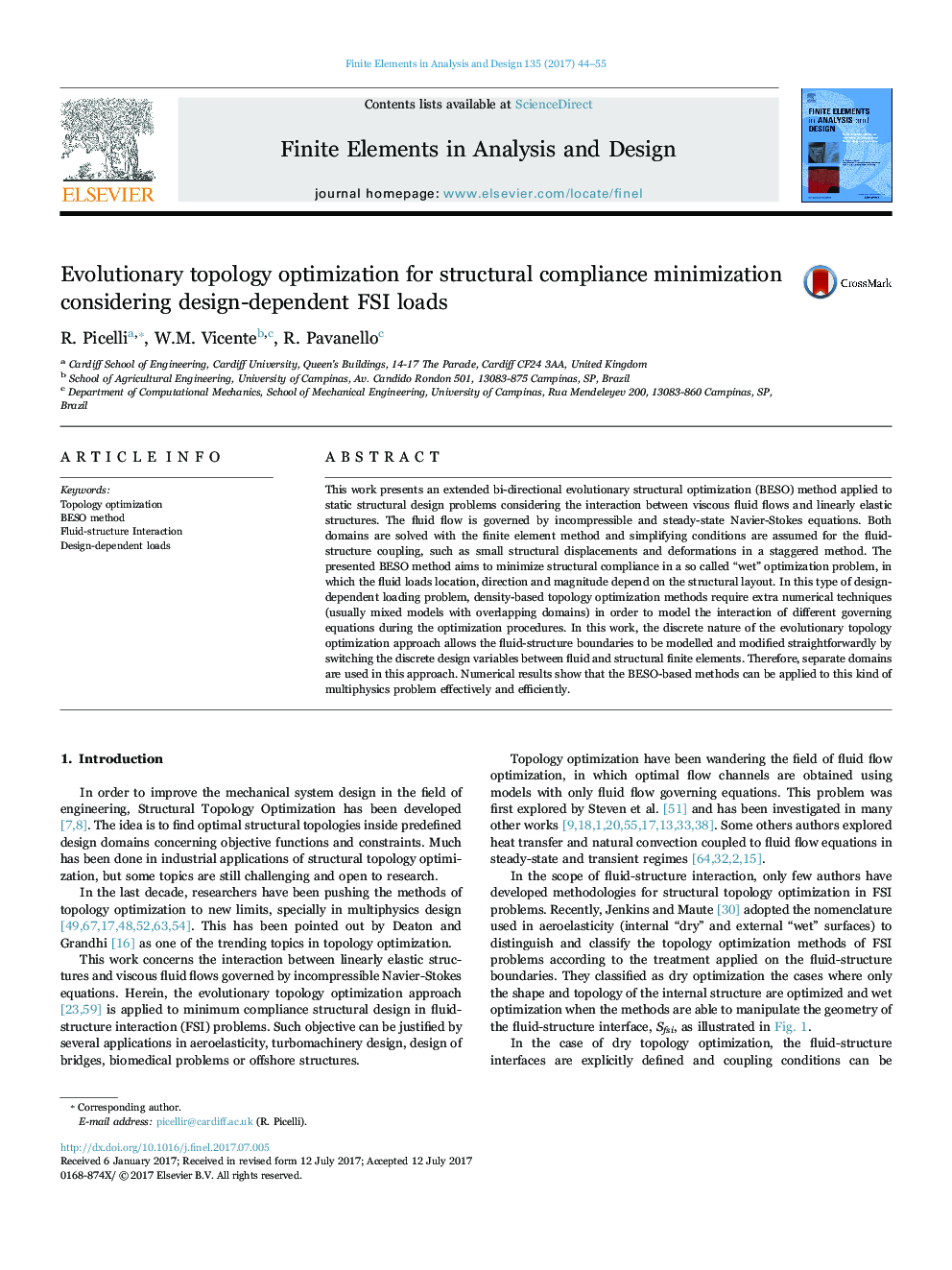| Article ID | Journal | Published Year | Pages | File Type |
|---|---|---|---|---|
| 4966138 | Finite Elements in Analysis and Design | 2017 | 12 Pages |
Abstract
This work presents an extended bi-directional evolutionary structural optimization (BESO) method applied to static structural design problems considering the interaction between viscous fluid flows and linearly elastic structures. The fluid flow is governed by incompressible and steady-state Navier-Stokes equations. Both domains are solved with the finite element method and simplifying conditions are assumed for the fluid-structure coupling, such as small structural displacements and deformations in a staggered method. The presented BESO method aims to minimize structural compliance in a so called “wet” optimization problem, in which the fluid loads location, direction and magnitude depend on the structural layout. In this type of design-dependent loading problem, density-based topology optimization methods require extra numerical techniques (usually mixed models with overlapping domains) in order to model the interaction of different governing equations during the optimization procedures. In this work, the discrete nature of the evolutionary topology optimization approach allows the fluid-structure boundaries to be modelled and modified straightforwardly by switching the discrete design variables between fluid and structural finite elements. Therefore, separate domains are used in this approach. Numerical results show that the BESO-based methods can be applied to this kind of multiphysics problem effectively and efficiently.
Related Topics
Physical Sciences and Engineering
Computer Science
Computer Science Applications
Authors
R. Picelli, W.M. Vicente, R. Pavanello,
